Cleaning your coffee grinder is an essential step in maintaining the quality and flavor of your coffee. Over time, oils from coffee beans can build up in the grinding chamber, affecting the taste and freshness of your brews. Regular cleaning not only ensures a better-tasting cup of coffee but also prolongs the lifespan of your grinder.
In this guide, we will discuss easy and effective ways to clean both blade and burr grinders. We will also cover tips for routine maintenance and troubleshooting common issues. Whether you are a daily coffee drinker or an occasional indulger, learning how to clean your coffee grinder properly is key to achieving that perfect cup every time.
Why Clean Your Coffee Grinder?
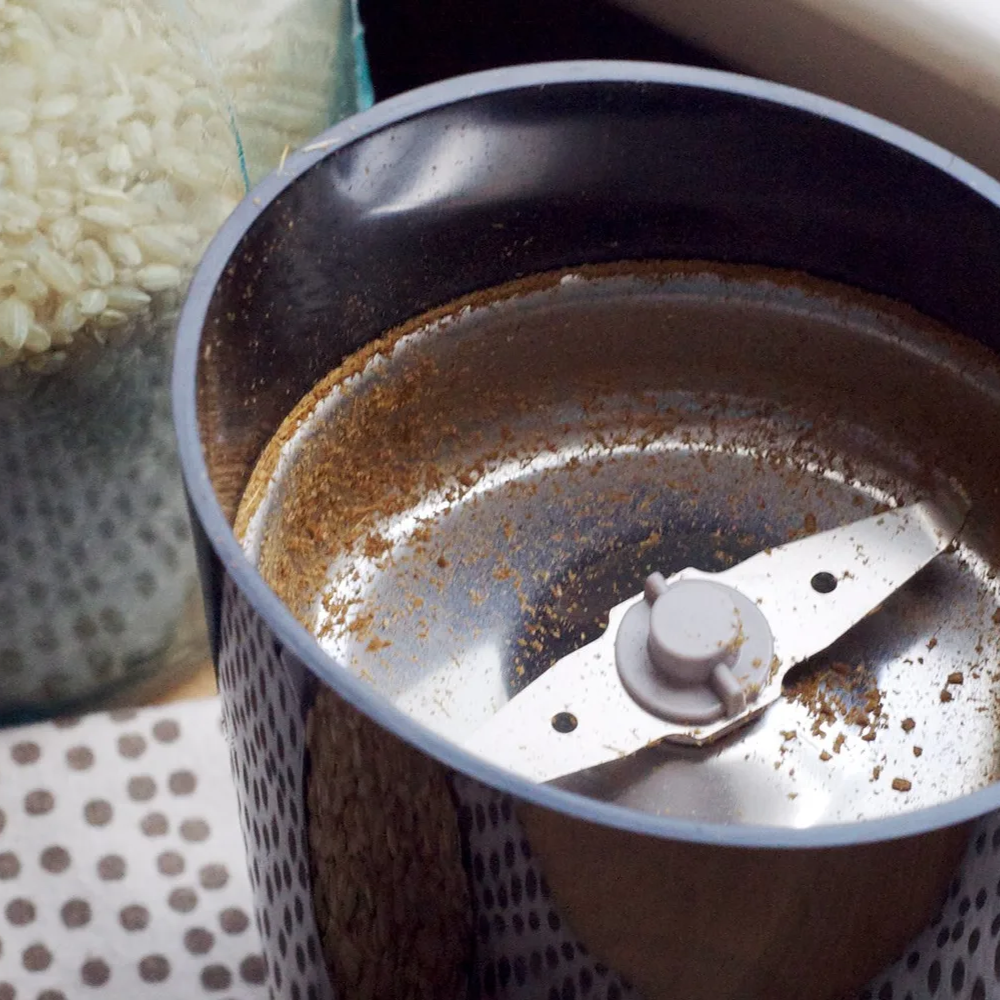
As mentioned, the buildup of oils from coffee beans in your grinder can greatly affect the taste and freshness of your coffee. These oils can become rancid over time and transfer onto new batches of beans, ruining their flavor profile.
Moreover, a dirty grinder can also lead to uneven grinding, which can result in an inconsistent extraction during brewing. This means some parts of your coffee may be over-extracted and bitter while others are under-extracted and weak.
Additionally, improper cleaning and maintenance can cause mechanical issues with your grinder such as clogging or dull blades/burrs, ultimately leading to a shorter lifespan for your machine.
Regularly cleaning your coffee grinder not only ensures the best-tasting cup but also saves you money in the long run by avoiding costly repairs or having to replace your grinder altogether.
How To Clean a Coffee Grinder
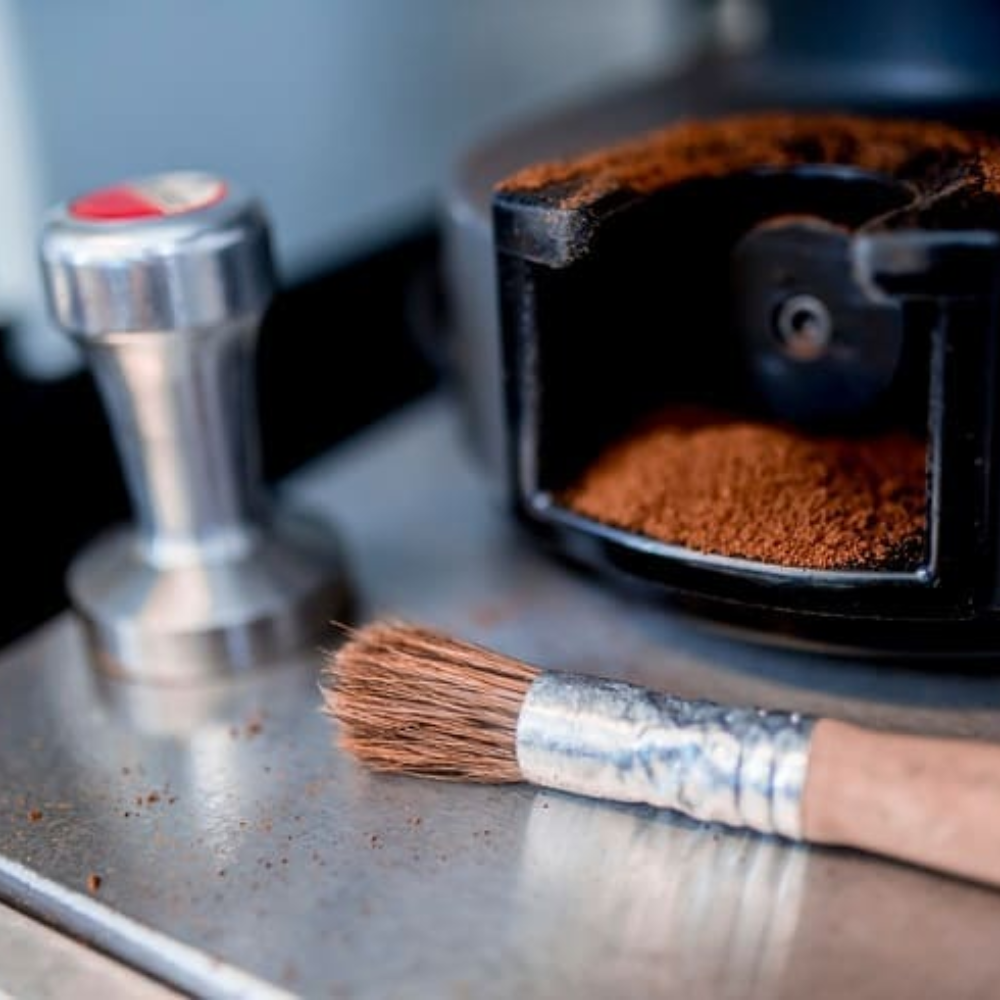
Now you know that cleaning your coffee grinder is crucial, let's dive into the steps for cleaning A Coffee Grinder:
Gather Your Materials
Before you begin the cleaning process, it's important to assemble all necessary materials to ensure an efficient and effective cleaning.
First, you'll need a soft brush, like a small paintbrush or a dedicated grinder brush, to sweep away loose coffee grounds from the grinding chamber. Next, have a microfiber cloth on hand for wiping down surfaces and removing any leftover oils.
You will also require a mild cleaning solution or a mixture of warm water and vinegar to soak the removable parts. If your grinder has many intricate components, consider using a toothbrush or cotton swabs for hard-to-reach areas. Lastly, make sure to have a small bowl or container for soaking removable pieces, along with a clean dry towel for drying them afterward.
Disassemble The Grinder
Now that you have gathered all the necessary materials, it's time to disassemble your coffee grinder and. This step may vary depending on the type of grinder you have, but in general, you'll need to remove the hopper, burrs or blades, and any other removable parts.
It's essential to refer to your grinder's manual for specific instructions on how to dismantle it properly. Make sure to take note of how each piece fits together and their placement before removing them.
Be careful when handling sharp components such as blades or burrs. You can use a soft brush or a toothpick to gently remove any stuck grinds from these pieces before soaking them.
Brush Away Loose Grinds and Debris
Once the grinder is disassembled, use a brush to remove any loose grinds and debris from the grinding chamber. Pay special attention to crevices, corners, and hard-to-reach areas where oils and grounds can accumulate.
You can also use a vacuum or compressed air to blow away any stubborn particles. Avoid using water at this stage as it can create a paste when mixed with coffee grounds, making it more difficult to clean.
Soak Removable Parts in Cleaning Solution
After brushing away loose grinds and debris, it's time to deep clean the removable parts by soaking them in a mild cleaning solution. You can use a mixture of warm water and vinegar (equal parts) or purchase a specialized coffee grinder cleaner.
Place the removable pieces in a bowl or container with the cleaning solution and let them soak for about 15-20 minutes. This will help break down any residual oils and make it easier to remove them.
Once soaked, use a toothbrush or cotton swabs to clean hard-to-reach areas, then rinse thoroughly with clean water and dry with a towel before reassembling.
Wipe Down the Grinder's Exterior
With the inner components clean and dry, it's time to address the grinder's exterior. Use a microfiber cloth slightly dampened with your mild cleaning solution to wipe down all surfaces of the grinder. This will help to remove any accumulated dust, oils, and residue from daily use, ensuring your appliance looks as good as it functions.
Pay extra attention to areas around the buttons and seams where grime can easily accumulate. If your grinder has a stainless steel finish, consider using a dedicated stainless steel cleaner for a polished appearance.
Once you've wiped down the exterior, use a dry cloth to remove any moisture. Regularly cleaning the outside of your grinder not only maintains its aesthetic appeal but also prevents other contaminants from interfering with the quality of your coffee.
Reassemble and Run a Test Grind
After all the components are clean, dry, and reassembled, it's time to test your grinder. Make sure everything is properly aligned and secured before turning on the machine.
To ensure that all residual oils and cleaning solutions have been removed, run a small batch of beans through the grinder. This will also help to season or "calibrate" the burrs or blades for optimal grinding performance.
If you notice any odd noises or inconsistent grinds during this test run, refer back to your manual for troubleshooting tips or contact customer support for assistance.
Does A Clean Grinder Make a Difference?
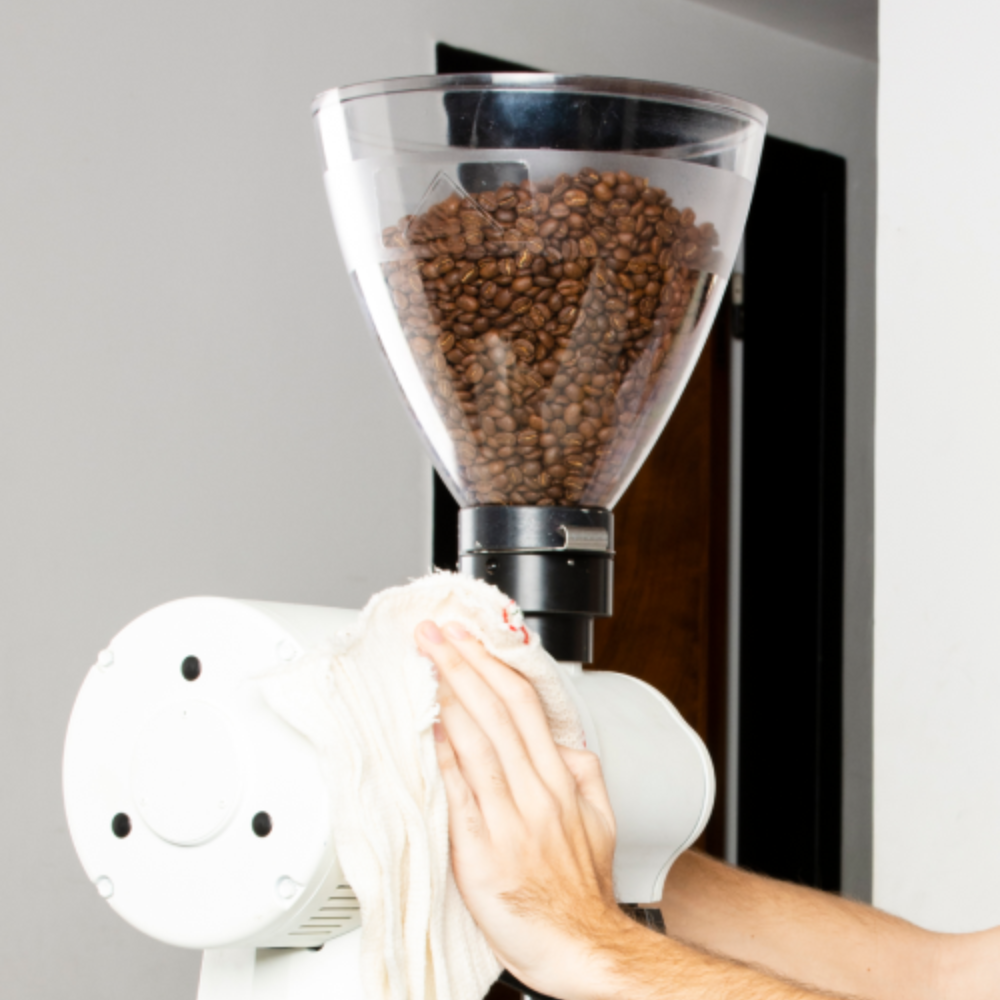
Absolutely! A clean grinder can significantly impact the taste and quality of your coffee. When oils and residue build up on the blades or burrs, they can transfer to your freshly ground coffee, affecting its flavor.
Moreover, dirty grinders can also lead to clogging and uneven grinding, resulting in an inconsistent brew. This can be frustrating for coffee lovers who want a perfect cup every time.
A clean grinder not only ensures a better-tasting coffee but also promotes hygiene and reduces the risk of cross-contamination between different types of beans. It also helps maintain the overall functionality and lifespan of your grinder.
Regular cleaning is especially important if you use flavored or oily beans, as they can leave more residue on the components. By following a proper cleaning routine, you can preserve the original flavor of your coffee and avoid any potential health hazards.
Why A High-Quality Grinder is Important
Investing in a high-quality grinder is crucial for any coffee lover. Whether it's a blade or burr grinder, the quality of your grind can greatly impact the taste and aroma of your coffee.
Cheap grinders often have dull blades or poorly designed burrs, resulting in inconsistent grinding and an overall mediocre brew. They may also be made with lower-quality materials that are more prone to wear and tear, leading to a shorter lifespan.
On the other hand, high-quality grinders are designed with precision and durability in mind. This ensures a consistent grind size, which is essential for achieving optimal flavor extraction. Additionally, they are made with sturdy materials that can withstand frequent use and cleaning.
Investing in a high-quality grinder may seem like an added expense, but it can greatly enhance your coffee experience and save you money in the long run. With proper maintenance, a good quality grinder can last for years, providing you with delicious and consistent cups of coffee every time.
How To Buy A Quality Grinder
If you're looking to upgrade your coffee game with a high-quality grinder, there are a few things to consider before making a purchase.
First, decide on the type of grinder (blade or burr) and choose one that fits your budget. Burr grinders tend to be more expensive but offer better quality and versatility.
Next, look for grinders with adjustable grind settings, as this will allow you to customize the grind size for different brewing methods. It is also essential to pay attention to the materials used in the construction of the grinder, as they can affect its longevity and performance.
Reading reviews and doing research on specific brands or models can also help you make an informed decision. Lastly, consider the warranty and customer service offered by the manufacturer, as it can provide peace of mind and help in case of any issues.
Investing in a quality grinder may seem like a daunting task, but it is worth it for coffee enthusiasts who want the best possible cup every time. With proper care and maintenance, a good grinder can elevate your brewing experience and ensure delicious coffee for years to come.
Tips for Maintaining a Clean Grinder
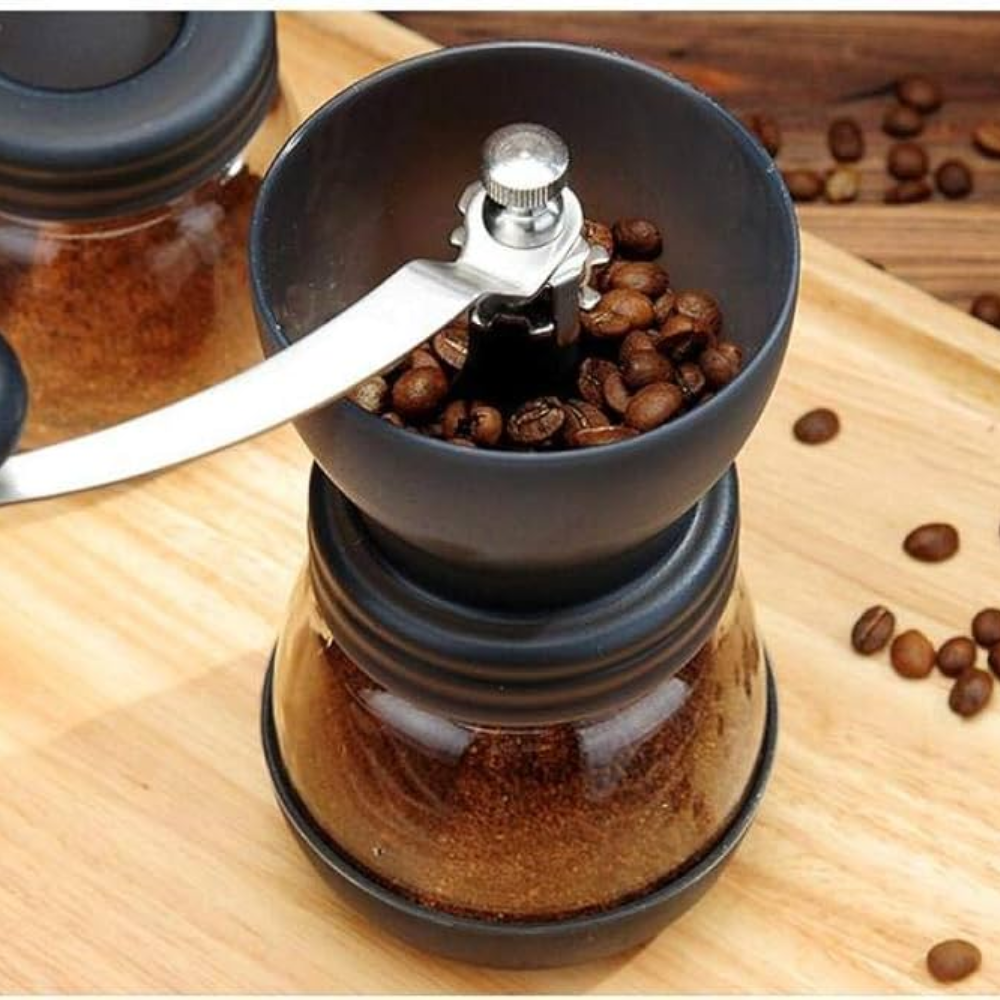
Maintaining a clean grinder is essential to ensure the best-tasting coffee. Here are some tips to help you keep your grinder in top condition:
- Regularly clean the interior components: Depending on how often you use your grinder, it is recommended to clean the blades or burrs at least once a week. This will prevent any buildup of oils and residue that can affect the quality of your coffee.
- Don't forget about the exterior: As mentioned earlier, wiping down the outside of your grinder with a damp cloth is crucial to remove any dust or debris that may accumulate over time.
- Use proper cleaning tools: Avoid using harsh chemicals or abrasive cleaners when cleaning your grinder. Instead, use mild soap and water with a soft-bristled brush to gently scrub away any stains or spots.
- Store in a clean and dry place: After each use, make sure to store your grinder in a clean and dry place. This will prevent any potential rust or mold buildup and maintain the overall quality of your grinder.
- Replace worn-out components: Over time, the blades or burrs on your grinder will wear out and need to be replaced. It is important to regularly check for any signs of damage or dullness and replace them as needed.
By following these tips, you can ensure a clean and well-maintained grinder that will help you brew delicious coffee every day.
FAQs
How often should I clean coffee grinders?
Cleaning coffee grinders regularly is essential to ensure optimal performance and flavor. It's recommended to clean your grinder after every 20-30 uses, or at least once a month if you grind coffee daily.
What is the best way to remove coffee dust from a burr coffee grinder?
To remove coffee dust from a burr coffee grinder, first unplug the grinder. Remove any excess coffee grounds from the grind chamber and burrs using a soft brush. For a thorough cleaning, use grinder cleaning tablets according to the manufacturer's instructions.
Can I use a paper towel to clean my coffee grinder burrs?
While you can use a paper towel to wipe the exterior and accessible parts of your coffee grinder burrs, avoid using a paper towel on the inner mechanisms. A soft brush is better suited for removing coffee dust and debris from the burrs without causing damage.
What's the difference between cleaning a blade grinders and a burr coffee grinder?
Cleaning a blade grinder and coffee grinder typically involves wiping down the blades and the grinding chamber with a damp paper towel to remove excess coffee grounds and dust. In contrast, a burr coffee grinder requires disassembling the burrs for a more detailed cleaning to ensure all coffee residue is removed.
How do grinder cleaning tablets improve the maintenance of coffee grinders?
Grinder cleaning tablets are designed to remove coffee oils and particles that accumulate over time in coffee grinders. They are an effective method for deep cleaning the internal parts of both blade coffee grinders and burr coffee grinders, helping to maintain the grinder's efficiency and prolong its lifespan.
Conclusion
In conclusion, a clean grinder is essential for achieving the best possible cup of coffee. It not only enhances the flavor and aroma but also promotes hygiene and maintains the functionality of your grinder.
Investing in a high-quality grinder is also crucial for any coffee lover, as it can greatly impact the taste and consistency of their brew. When buying a grinder, remember to consider factors such as type, price, grind settings, materials, and warranty.
Also when buying a grinder, it is important to follow proper maintenance and cleaning routines to prolong its lifespan.
Ultimately, investing in a quality grinder and maintaining it properly will result in a consistently delicious cup of coffee that will satisfy even the most discerning taste buds. Cheers to great coffee!
Subscribe to our email newsletter and unlock access to members-only content and exclusive updates.
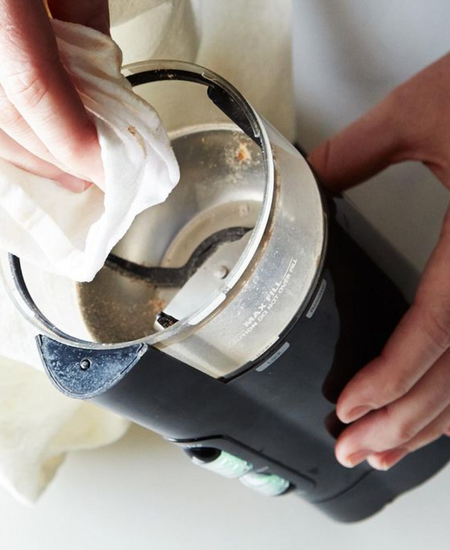
Comments